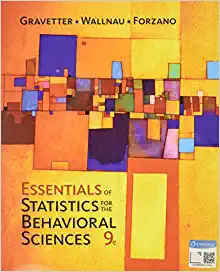In Example 8.1 (page 200) we discussed a research study by Guguen and Jacob (2012) showing that
Question:
In Example 8.1 (page 200) we discussed a research study by Guéguen and Jacob (2012) showing that waitresses received significantly larger tips when they were wearing red T-shirts compared to other colors. The actual study used a repeated-measures design in which waitresses in five different restaurants wore the same T-shirt in six different colors
(red, blue, green, yellow, black, and white) on different days during a six-week period. Each waitress recorded the average tip received while wearing red and the average while wearing another color and computed the difference between the two scores.
A similar study also found that tips were higher when waitresses wore red, with a mean difference of MD 5 32 cents for each $10 of restaurant bill for a sample of n 5 11 waitresses. If the difference scores had s 2 5 539, are the data sufficient to decide that tips are significantly higher when waitresses wear red? Use a one-tailed test with a 5 .01.
Step by Step Answer:

Essentials Of Statistics For The Behavioral Sciences
ISBN: 9781337098120
9th Edition
Authors: Frederick J Gravetter, Larry B. Wallnau, Lori Ann B. Forzano





